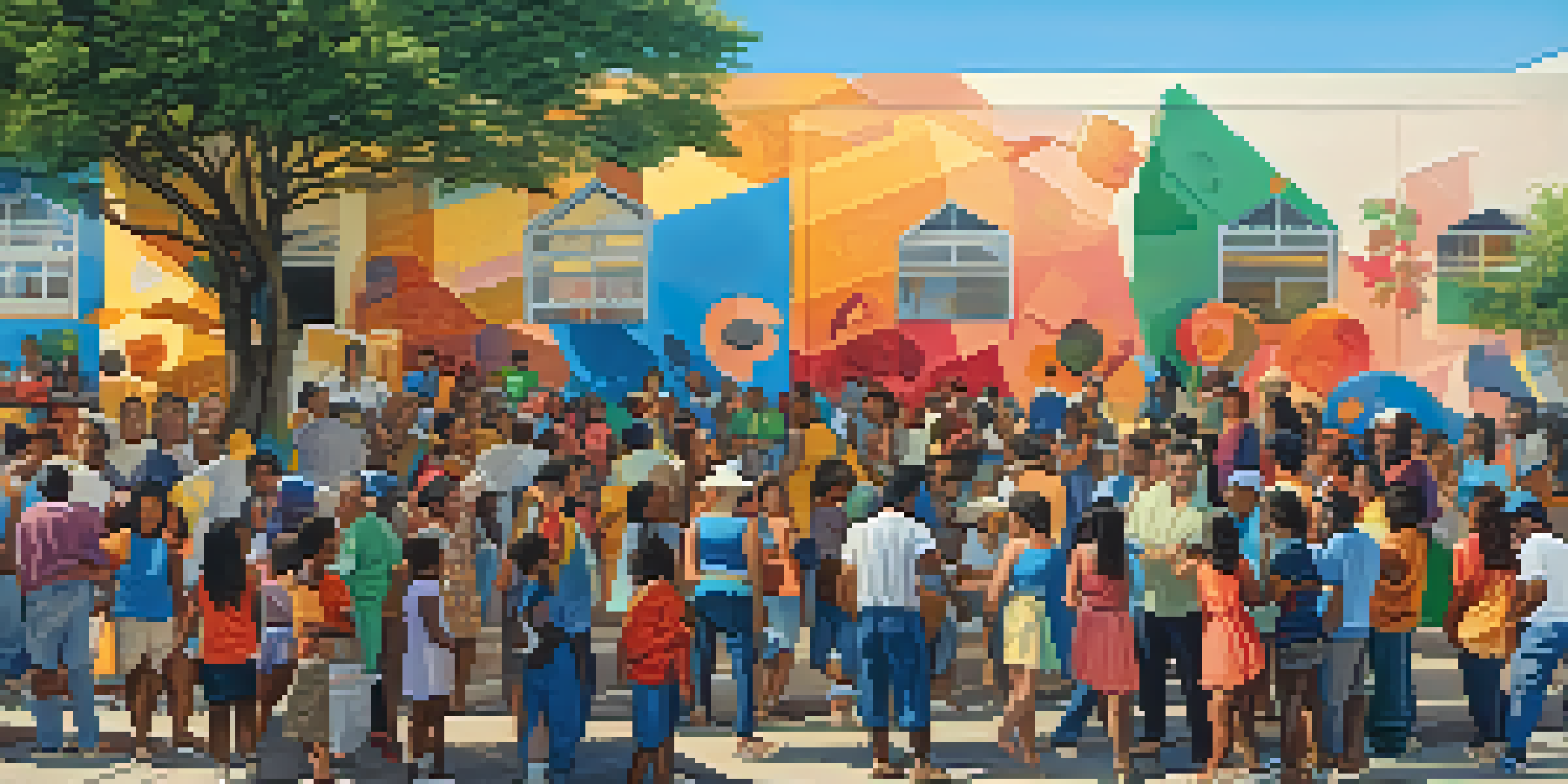The Intersection of Art and Civic Identity in Local Narratives

Understanding Civic Identity and Its Importance
Civic identity refers to the sense of belonging and shared values within a community. It shapes how residents perceive their roles and responsibilities in society. When individuals feel connected to their civic identity, they are more likely to engage in local initiatives and contribute positively to their neighborhoods.
The Role of Art in Community Expression
Art serves as a powerful medium for communities to express their unique identities and histories. Through murals, sculptures, and performances, local artists often highlight important narratives that resonate with the community. This artistic expression not only beautifies public spaces but also fosters a sense of pride among residents.
Civic Identity Fosters Community Engagement
A strong civic identity encourages residents to take an active role in local initiatives and responsibilities.
Examples of Art Reflecting Local Histories
Consider the vibrant murals in cities like Philadelphia, which tell the stories of its rich history and diverse communities. Each brushstroke captures moments that have shaped the local landscape, making art a living archive of civic identity. These visual narratives invite residents and visitors alike to engage with the past while reflecting on the present.
Art as a Catalyst for Civic Engagement
When communities come together to create or appreciate art, it often sparks conversations about civic duties and shared goals. Events like community art festivals or public art projects can inspire residents to take part in local governance or volunteer initiatives. This collective engagement can lead to stronger bonds and a more vibrant civic life.
Art Reflects and Shapes Community Stories
Art serves as a vital medium for expressing local histories and identities, creating a visual narrative that connects residents.
Challenges Faced by Local Artists and Communities
Despite the benefits, local artists often face challenges such as funding shortages and limited access to public spaces. These barriers can hinder the creation of art that represents the community's identity. Overcoming these challenges requires collaboration between artists, local governments, and civic organizations to ensure that community voices are heard and represented.
The Impact of Digital Art on Civic Narratives
In today's digital age, art can transcend physical boundaries, allowing for broader civic narratives. Online platforms enable artists to share their work with a global audience, fostering cross-cultural understanding. This digital presence can amplify local stories, drawing attention to civic issues that may otherwise go unnoticed.
Digital Art Expands Civic Narratives
In the digital age, art can reach global audiences, amplifying local stories and civic issues that might otherwise remain hidden.
Future Possibilities: Art and Inclusive Civic Identity
As communities evolve, so too must the narratives they embrace. Future art projects have the potential to be more inclusive, representing diverse voices and experiences. This shift can lead to a richer, more nuanced understanding of civic identity that honors the past while looking forward to a collaborative future.
Conclusion: Celebrating the Intersection of Art and Identity
The intersection of art and civic identity is a vibrant, evolving space that reflects the essence of communities. By celebrating local narratives through artistic expression, communities can strengthen their bonds and create a more engaged citizenry. Ultimately, art not only enriches our surroundings but also deepens our understanding of who we are as a collective.